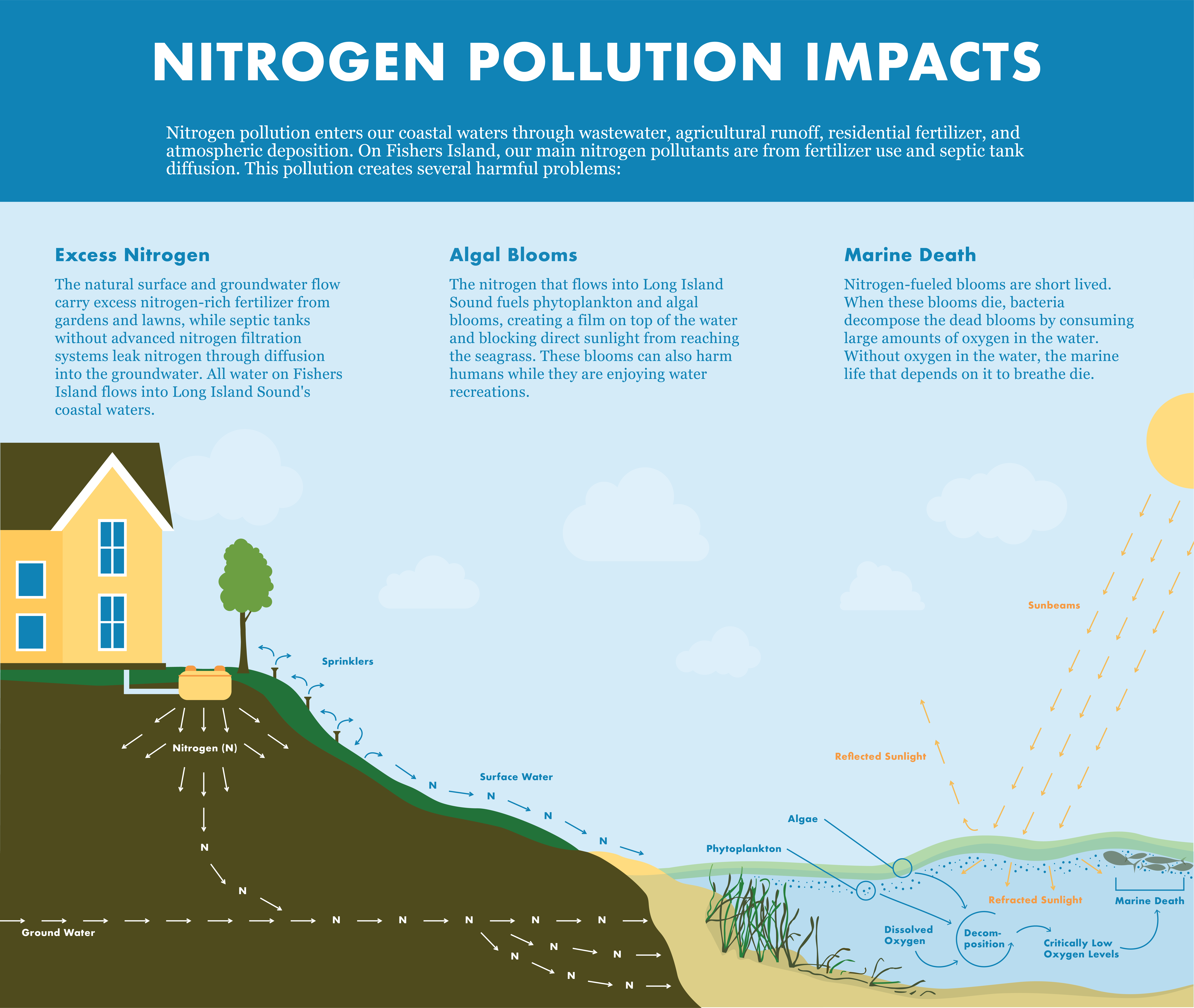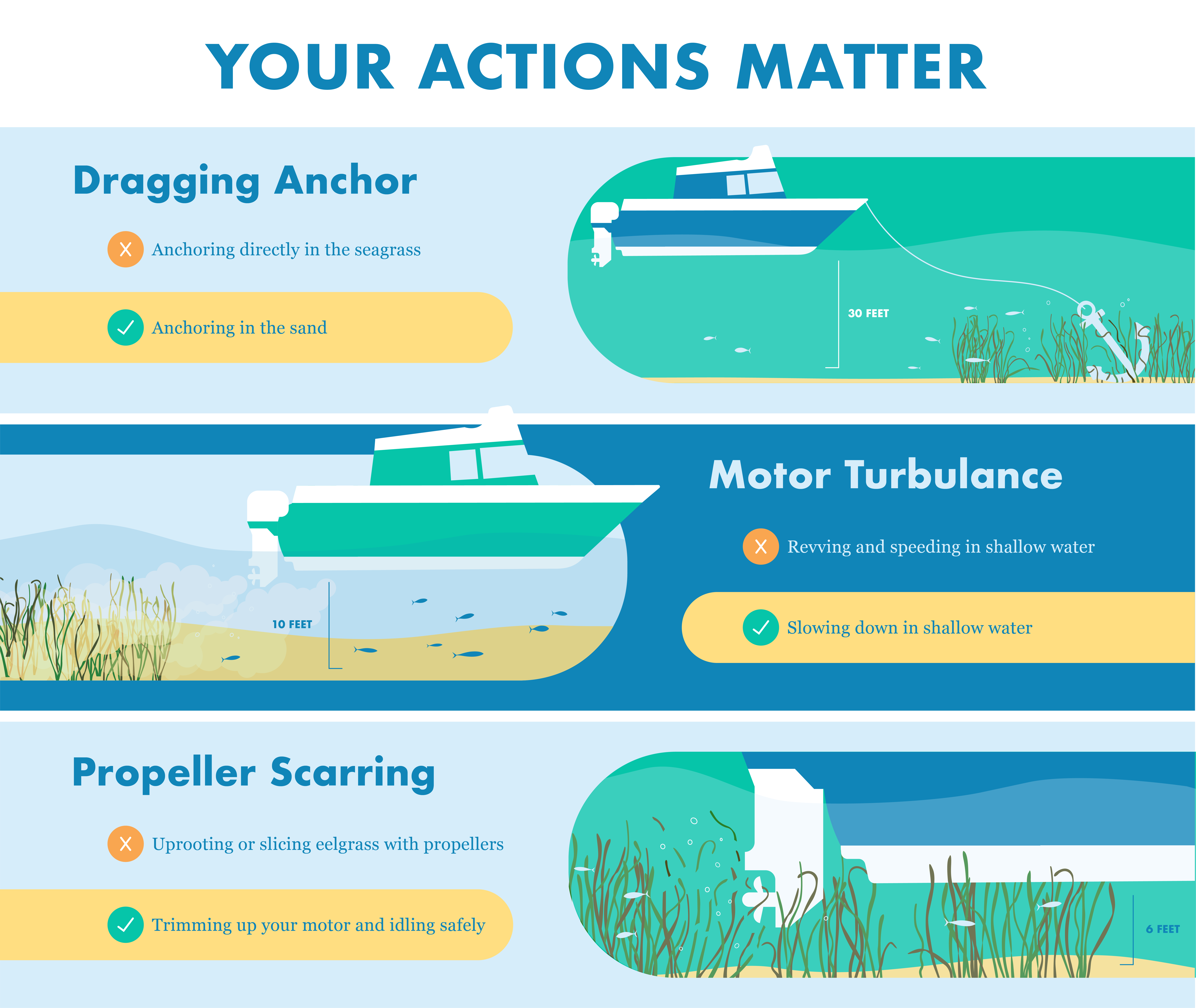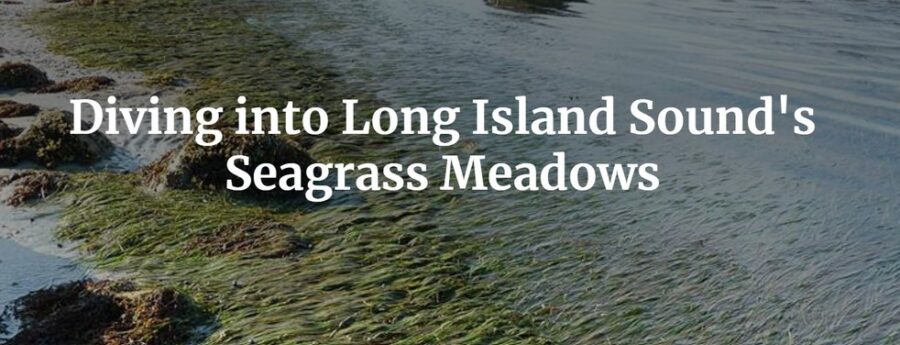What is the Long Island Sound Eelgrass Restoration Strategy?

The Long Island Sound Eelgrass Management and Restoration Strategy provides guidance for short and long-term actions that should be taken to manage and restore eelgrass meadows in Long Island Sound and act as a resource for other estuaries in the region facing similar issues. The strategy is a living document, meaning that as new research, resources, and information becomes available, the gaps and required actions may change. It was developed by the EPA Long Island Sound Office in collaboration with the Long Island Sound Study and local expert and stakeholder input.
Why is Eelgrass Important?
Eelgrass (Zostera marina), a type of seagrass, is submerged aquatic vegetation found in marine environments. Seagrasses are the only true marine angiosperm, meaning that in addition to asexual reproduction, the plants can reproduce sexually through flowering, pollination, and seed germination. Eelgrass is the dominant seagrass species found in Long Island Sound and is considered one of the 12 priority habitat types for the partnership to protect and restore.
In the Comprehensive Conservation and Management Plan (CCMP), the Thriving Habitats and Abundant Wildlife theme includes the ecosystem target, Eelgrass Extent, memorializes the goal to restore and maintain an additional 2,000 acres of eelgrass by 2035 from a 2012 baseline of 1,893 acres. Since 2002, eelgrass meadows have been intermittently monitored through US Fish and Wildlife Service aerial surveys. The most recent aerial survey in 2017 showed a decline in eelgrass extent in Long Island Sound of 8.8% since 2012 to 1,465 acres. In addition, there is also the Water Clarity Ecosystem Target in which the goal is to improve water clarity by 2035 to support healthy eelgrass communities and attainment of the Eelgrass Extent target.
While these aerial surveys provide valuable insight on eelgrass distribution, there is a lack of proactive management and restoration efforts due to knowledge gaps related to distribution trends and their drivers. Furthermore, water quality and climate issues pose major impacts to eelgrass meadows’ distribution and productivity, threatening eelgrass extent in Long Island Sound. Through the implementation of the eelgrass strategy, these gaps are addressed through the dedication of the LISS partnership.
How is the strategy being implemented?
LISS partners are working hard to protect and restore eelgrass. Check out the projects table to learn more about these efforts!
What You Can Do?
As residents and visitors of the Long Island Sound, YOU can also help us protect and restore eelgrass. Here is a list of how to get involved:
- Reduce Fertilizer Use and Plant Native
- Think Native – Native plants are well adapted to your property’s soil, so they do not need fertilizer or excess water to establish and thrive in this environment.
- Be Organic – There are many ways to keep your lawns neat and green without chemical fertilizer.
- Assess Carefully – If natural alternatives are not for you, please use as little chemical fertilizer as possible. We suggest you try cutting your usage by half and observing the difference; if your lawn is still satisfactory, you may have applied more than you needed in previous years. Also, consider using a time-release fertilizer, and please avoid applying any fertilizer during droughts or before storms.
- Commit to Zero Fertilizer – Eliminating your fertilizer use is the best way to save our freshwater and saltwater ecosystems from the damage it causes!

- Dispose and recycle trash properly to keep marine debris out of the waters.
- Engage in seagrass-safe boating – Use this handy checklist!
- Look Before You Drop – Eelgrass is easy to see over the side of your boat. Avoiding eelgrass when you anchor is the easiest way to be a seagrass-safe boater.
- Take it Easy – Shallow coastal areas are home to seagrass and many other marine organisms, and your propellor can harm them. Slowing down is an easy way to avoid damaging the seafloor and your motor!
- Give it a Shove – If you run aground, get into the water and push your boat into deeper water. Trying to motor your way out will hurt your equipment and the ecosystem.

- Volunteer for restoration activities. Check out the Long Island Sound Study Facebook and Instagram account (@lisoundstudy) to keep up with upcoming events.
- Raise awareness and educate your peers!! Spread the word about the importance of seagrass to continue to better protect and restore Long Island Sound.
